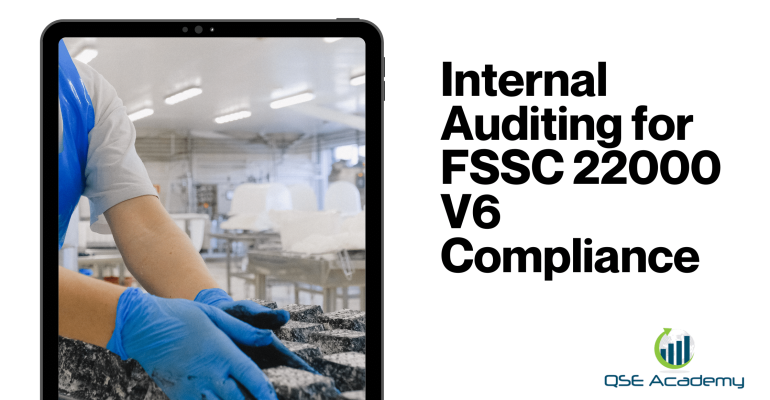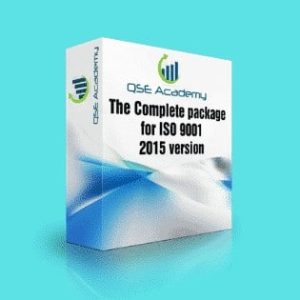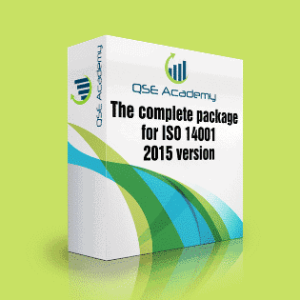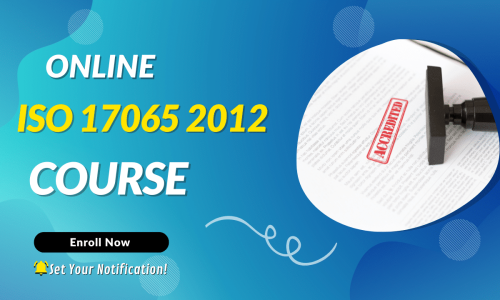Internal Auditing for FSSC 22000 V6 Compliance
Last Updated on October 13, 2025 by Hafsa J.
Internal Auditing for FSSC 22000 V6 Compliance
Let’s be honest—when most people think about internal audits, the first word that comes to mind usually isn’t “exciting.” For some, it’s a checkbox. For others, it’s a last-minute scramble before the certification body shows up.
But in my experience helping food businesses of all shapes and sizes get—and stay—certified under FSSC 22000, I’ve learned this:
Internal audits are one of the most powerful tools you have to protect your system, your customers, and your reputation.
And under Version 6, they’re more important than ever.
Why? Because FSSC 22000 V6 isn’t just about compliance anymore. It’s about proving that your food safety system actually works—not just on paper, but in real life, on real production lines, with real people making real decisions.
That’s where internal audits come in. Done right, they give you the chance to spot risks before anyone else does. To test your own controls before someone tests them for you. And to build a culture where quality and food safety aren’t just talked about—they’re lived.
In this article, I’ll walk you through exactly how to build and run internal audits that go beyond surface-level checks and align with the expectations of FSSC 22000 Version 6. We’ll cover the new requirements, practical audit tips, common mistakes, and how to turn findings into fuel for improvement.
If you’re tired of audits that feel like a formality, you’re in the right place.
Let’s dig in.
What’s the Role of Internal Audits in FSSC 22000 V6?
If you’re looking at internal audits as just another “must-do” item on your compliance list, it’s time to shift that mindset. Under FSSC 22000 Version 6, internal audits are more than just a routine—they’re a direct line into the health and maturity of your food safety management system (FSMS).
Why Internal Audits Matter More Than Ever
Here’s the thing: auditors, regulators, and even your customers don’t just want to know that you’ve got a system. They want to know it actually works. That it’s monitored. That it evolves. That your team understands it.
And internal audits are how you prove that.
When done right, your internal audits:
-
Verify whether controls are not just in place, but effective
-
Uncover weak spots before they become audit findings or worse—recalls
-
Drive ongoing improvements tied to your food safety goals
-
Show that you’re actively managing risk, not just reacting to it
In short, they show leadership.
What FSSC 22000 V6 Expects from Your Internal Audits
Version 6 hasn’t just raised the bar—it’s reframed the role of internal audits altogether. Here’s what the standard wants to see:
-
Process-based auditing: You’re no longer just auditing departments or documents—you’re auditing how food safety is built into your processes, from receiving to shipping.
-
Risk-based approach: Your internal audit schedule should reflect risk. High-risk processes? Audit them more frequently.
-
System maturity: The more robust and realistic your audits are, the more they reflect the true maturity of your FSMS.
-
Evaluation of food safety culture: Yes, even internal audits now touch on culture. You’re expected to assess whether your policies and procedures are being followed—and believed.
Real Talk from the Field
I once worked with a mid-sized snack food company that had a beautiful set of procedures—but hadn’t audited their allergen changeover process in over a year. During a mock audit, we found multiple control breakdowns. If that had been a real audit? It would’ve been a major finding.
That’s the power of internal audits. They let you find the gaps when it’s still safe to fix them.
Key Changes in Internal Auditing Under Version 6
If you’ve been through internal audits under the previous version of FSSC 22000, you might be thinking, “We’ve got this.” But here’s the thing—Version 6 didn’t just tweak the requirements. It shifted the mindset.
Auditors are no longer satisfied with clean checklists and well-organized folders. Now, they want proof that your internal audits are real, risk-based, and reflective of how your system actually works.
Let’s unpack what that means.
1. Internal Audits Must Reflect Food Safety Culture
This isn’t just lip service anymore. The standard now expects your internal audit program to touch on the behavioral side of food safety.
That means during internal audits, you should be asking:
-
Are employees actually following SOPs—or just when someone’s watching?
-
Do people understand why certain steps matter—or are they just going through the motions?
-
Can they describe how their work affects food safety in their own words?
Tip from the field: One client I worked with started including short interviews with production staff during internal audits—and discovered multiple hidden gaps that never would’ve shown up on a checklist.
2. Increased Focus on Audit Effectiveness (Not Just Completion)
It’s no longer enough to show that you conducted an audit. You need to demonstrate that:
-
It was based on risk and performance
-
It resulted in corrective actions that were actually followed through
-
It fed into management review and system improvement
Auditors want to see that your internal audits are driving change, not just checking boxes.
3. Stronger Links to Risk-Based Thinking
Under Version 6, your internal audit schedule must consider:
-
The risk level of the process
-
The history of nonconformities or issues
-
Any recent changes in equipment, suppliers, or products
If your audit schedule still says “everything once a year, every year,” you’re not meeting expectations.
4. Supporting Unannounced Audit Readiness
Unannounced audits are now very much on the table. That means your internal audit process should reflect real-time system readiness.
In practice, this could mean:
-
Performing audits at different times of day or shifts
-
Reviewing records from days the leadership team wasn’t present
-
Randomizing audits to simulate how an external auditor might approach it
Why These Changes Matter
These updates aren’t about making your life harder—they’re about making your system stronger.
I’ve worked with companies that were blindsided during a certification audit because their internal audits didn’t go deep enough. Their paperwork looked perfect—but their team couldn’t answer simple food safety questions. The result? Major nonconformities.
Version 6 is pushing companies toward audit programs that reflect reality—not just procedure.
Conducting the Internal Audit: What to Look For
Planning is important, but the real value of an internal audit comes from what you uncover during the actual walk-through. This is where the difference between a surface-level audit and a meaningful one becomes clear.
In my experience, the most effective internal audits are the ones that feel less like a checklist—and more like a real-world investigation. You’re not just verifying if things exist… you’re testing if they work.
Follow the Process, Not Just the Paperwork
Don’t audit departments. Audit processes. That means following the flow of materials and decisions from start to finish.
For example, if you’re auditing your cleaning and sanitation process:
-
Watch a sanitation cycle happen in real-time
-
Review the corresponding cleaning records
-
Ask the sanitation team how they verify effectiveness
-
Check if chemicals are being measured and stored correctly
-
Verify if pre-op checks are being done and documented properly
Too often, internal audits focus solely on reviewing binders. But food safety doesn’t live in binders—it lives on the floor.
Talk to People—That’s Where the Real Info Lives
This is where you’ll separate a basic audit from a Version 6-level one. Talk to staff. Ask open-ended questions like:
-
“Can you walk me through your start-of-day checks?”
-
“What happens if you find a foreign object?”
-
“How do you know the line is allergen-free before switching products?”
And pay attention to how confident and consistent their answers are. You’ll learn a lot about training effectiveness, communication gaps, and—yes—food safety culture.
Look for Evidence, Not Just Compliance
Don’t just ask, “Is this being done?” Ask:
-
“How do you know it’s effective?”
-
“What do you do when it doesn’t go as planned?”
-
“Can I see the record that shows this was done last week?”
Good audits challenge the system gently but clearly. They focus on whether it’s functioning—not just whether it’s present.
Be Curious About Deviations and “Workarounds”
If you see something that doesn’t match the procedure—dig in.
Sometimes the best audit findings come from asking, “Why are you doing it this way instead?” Maybe the procedure is outdated. Maybe the reality on the floor is more efficient—or riskier. Either way, it’s valuable insight.
Real story:
During an audit with a mid-sized frozen food company, we noticed the sanitation crew was using a different chemical than listed in the SOP. Turns out the original product had been discontinued—but no one had updated the procedure. That one observation prevented what could’ve been a major finding during the certification audit.
Document Observations Clearly
Keep your notes objective, not emotional. Instead of writing, “The operator didn’t seem to care,” write, “Operator was unaware of the allergen changeover protocol and could not describe it.”
The goal is clarity, not blame. You’re not pointing fingers—you’re improving systems.
Reporting, Nonconformities, and Corrective Actions
So, you’ve completed the audit. You’ve walked the process, talked to the team, reviewed the records, and made observations. Now it’s time to translate all of that into something useful: an audit report that drives real improvement—not just a summary no one reads.
Here’s how to do it right.
Write Clear, Objective Audit Reports
Your audit report doesn’t need to be fancy, but it does need to be clear. A solid report includes:
-
What was audited (scope, criteria, and date)
-
Who conducted the audit
-
What was found—both conformities and nonconformities
-
Evidence observed (documents reviewed, interviews held, physical observations)
-
Any recommendations or opportunities for improvement
Tip: Avoid vague phrases like “procedure not followed.” Instead, say “Procedure SOP-009 requires allergen checks before line startup; no evidence of checklists completed on [date].”
Specificity gives your team something to act on—and shows auditors that your internal reviews are serious.
Classify Your Findings Appropriately
Not every issue is a crisis. But not everything is “just an observation” either.
Here’s a simple breakdown:
-
Major nonconformity – A significant breakdown or failure to meet a critical food safety requirement
-
Minor nonconformity – A one-off or isolated lapse that doesn’t indicate systemic failure
-
Observation or opportunity for improvement – Something that’s not wrong, but could be better or may become a risk
Be consistent with your classification—and back it up with clear reasoning.
Develop Realistic, Rooted Corrective Action Plans (CAPs)
A weak CAP is worse than no CAP at all. It shows auditors your system exists, but doesn’t evolve.
Here’s what a strong CAP includes:
-
Root cause analysis – Not just the surface issue, but why it happened
-
Corrective action – The fix
-
Preventive action – How to ensure it doesn’t happen again
-
Responsible person – Who’s owning the fix
-
Timeline – When it will be done
-
Verification – How you’ll confirm it worked
Pro insight: I always encourage clients to use the “5 Whys” technique during root cause analysis. It avoids the blame game and gets you to the system-level issue faster.
Follow Up—And Close the Loop
This is where a lot of companies drop the ball. The audit’s done, the report’s written, the CAP is drafted… and then? It just sits.
Here’s what auditors expect to see:
-
That you actually implemented the corrective action
-
That someone verified it was effective
-
That you documented the whole process
Use your next internal audit or a management review to follow up. That shows your FSMS is alive and evolving.
Using Internal Audits to Drive Continuous Improvement
Here’s the truth: the companies that excel under FSSC 22000 aren’t the ones that treat internal audits as a once-a-year ritual. They’re the ones that treat them as an engine for continuous improvement—something that helps their operations get better, smarter, and safer every cycle.
So how do you move from “checking boxes” to actually improving performance?
Look for Trends, Not Just One-Offs
When you step back and look at audit findings over time, patterns often emerge.
Ask yourself:
-
Are the same types of nonconformities popping up in different areas?
-
Are certain teams or shifts more prone to issues?
-
Are the same root causes showing up again and again?
Tip from the field:
One of my clients, a beverage processor, began mapping all their internal audit findings on a simple spreadsheet with color codes by category. Within three months, they spotted a pattern in allergen control issues—something they hadn’t noticed when looking at audits in isolation.
That insight helped them adjust training and procedures proactively—before it became a certification problem.
Integrate Audit Results Into Management Reviews
Internal audits shouldn’t live in a silo. Pull the most important takeaways into your management review meetings.
This helps:
-
Leadership stay connected to real risks and improvements
-
Ensure accountability for corrective actions
-
Link audit results to objectives, KPIs, and food safety goals
It also shows external auditors that you’re not just identifying problems—you’re managing them at the leadership level.
Use Internal Audits to Reinforce Food Safety Culture
Audits aren’t just for finding what’s broken. They’re also a great way to:
-
Highlight what’s working
-
Recognize teams doing things right
-
Reinforce behaviors that align with food safety goals
I often recommend including a “positive observations” section in your audit report. It builds morale, increases audit engagement, and reminds teams that food safety isn’t just about catching mistakes—it’s about building trust.
Make Internal Audits Part of Daily Life
The goal is to create a system that doesn’t feel like an audit-only environment—but one where being audit-ready is just how things are done.
You can support this by:
-
Conducting mini-audits or spot checks during regular operations
-
Empowering team leads to self-audit and escalate issues early
-
Sharing audit outcomes in team huddles or visual boards
When people know that audits are part of how your company stays excellent—not just compliant—they start to take ownership. That’s when real improvement happens.
Pro Tips for Stronger, Smarter Internal Audits
These are the strategies I share with clients who don’t just want to pass the audit—they want to improve how their system performs every day.
Pro Tip #1: Always Audit Behaviors, Not Just Paper
It’s easy to get stuck in the documents. But real value comes when you audit what people are doing, not just what’s written. Observe workflows. Ask “why” instead of “what.” You’ll uncover gaps that records alone would never reveal.
Pro Tip #2: Rotate Internal Auditors When Possible
Even in small facilities, rotating auditors across departments reduces bias and brings fresh eyes to recurring processes. I’ve seen companies catch long-standing issues simply because someone new asked a different question.
Pro Tip #3: Use a Nonconformity Tracker
Keep a running log of all internal audit findings—including minor issues and observations. Over time, this becomes a powerful tool for spotting trends, tracking closure, and showing your auditor how seriously you take continuous improvement.
Pro Tip #4: Schedule Surprise Spot Audits
You don’t need to be aggressive, but a well-timed, unannounced internal audit of a high-risk area (like allergen changeovers or sanitation validation) reinforces readiness and helps simulate GFSI-style external audits.
Pro Tip #5: Turn Audit Reports Into Team Coaching Moments
Instead of just emailing the audit report to management, take 10 minutes to walk your team through the findings. Use real examples, highlight both wins and gaps, and reinforce what’s working. This builds trust and culture.
Common Mistakes and FAQs
Even experienced teams can fall into predictable traps when it comes to internal auditing. The good news? Most of these mistakes are avoidable once you know what to look for—and what questions to ask.
Common Mistakes to Avoid
Mistake #1: Auditing Only the Documents
If your internal audit consists of reviewing binders in the conference room, you’re missing the point. Real audits involve walking the process, talking to staff, and looking at what’s actually happening on the floor.
Mistake #2: Using Untrained or Too-Familiar Auditors
Having a department manager audit their own area might seem convenient—but it’s not objective. And if your auditors haven’t been trained, they’re likely missing key issues. Internal audits must be independent and competent.
Mistake #3: Ignoring Minor Findings
Small issues have a way of becoming big problems. If you’re brushing off minor nonconformities or failing to follow up on observations, you’re building audit debt—and it always comes due during your certification audit.
Mistake #4: No Follow-Through on Corrective Actions
Creating a corrective action plan is one thing. Actually implementing and verifying it? That’s what matters. Certification bodies want to see closure—and evidence that improvements stick.
Mistake #5: Skipping Trend Analysis
If you’re not tracking your findings over time, you’re missing opportunities to spot system-level problems. Auditors love to see trend analysis—it shows maturity and a proactive approach.
Frequently Asked Questions
Q1: How often should we perform internal audits under FSSC 22000 V6?
Answer: At minimum, once per year—but that’s just the baseline. Version 6 expects a risk-based schedule, meaning high-risk processes or areas with a history of issues should be audited more frequently.
Q2: Can someone from our own team perform the audit, or do we need a third party?
Answer: You can absolutely use your own team—provided they’re trained and not auditing their own work. Some companies bring in consultants occasionally to offer a fresh perspective or fill knowledge gaps, but it’s not a requirement.
Q3: Do we need to audit every clause of the FSSC 22000 standard each year?
Answer: Not necessarily clause-by-clause, but your audit program should cover all applicable requirements, processes, and PRPs over your defined audit cycle. The goal is full coverage—not necessarily all at once.
Q4: How can we prove that our internal audit program is effective?
Answer: Simple—show your audit schedule, reports, corrective actions, closure evidence, and how the results are used in management review. Even better? Show that your system improves over time. That’s what real effectiveness looks like.
Make Your Internal Audits Count
Here’s the bottom line—internal audits are no longer just a box you check to keep your certification. Under FSSC 22000 Version 6, they’re a vital tool for understanding how well your food safety system actually works in practice.
If you take one thing away from this article, let it be this:
A well-run internal audit doesn’t just help you pass an external audit—it helps you build a safer, smarter, and more resilient operation.
Let’s recap the key ideas:
-
Internal audits should be process-based, risk-driven, and behavior-focused.
-
Version 6 expects your audits to reflect culture, leadership, and system maturity.
-
Planning, execution, reporting, and follow-up all matter—not just on paper, but in practice.
-
Avoiding common mistakes and asking the right questions can save your team serious stress—and uncover real opportunities for improvement.
In my work with food businesses across all sectors, I’ve seen the impact a strong internal audit program can have. Not just in avoiding nonconformities, but in empowering teams, driving real improvements, and creating a culture where food safety is second nature.
If you want to build or strengthen your internal audit program—and make sure it’s aligned with everything Version 6 demands—QSE Academy can help. Whether it’s documentation templates, auditor training, or a full gap assessment, we’ve got practical tools that fit your operation and your goals.
Reach out today and let’s make your internal audits work for you—not against you.
Whether it’s ISO 9001, ISO 22000, or the cosmetics-focused ISO 22716, I’ve spent my career I’m not here to call myself an expert—I prefer “enthusiast” because I truly love what I do. When I’m not writing about standards, you’ll probably find me playing Piano 🎹, connecting with people, or diving into my next big project💫. I’m an engineer specialized in the food and agricultural industry
make ISO standards less intimidating and more approachable for everyone.
turning complex jargon into clear, actionable steps that businesses can actually use.
There’s something incredibly rewarding about helping people navigate food safety and quality management systems
in a way that feels simple, practical, and even enjoyable.
I have a Master’s in QHSE management and over 12 years of experience as a Quality Manager
I’ve helped more than 15 companies implement ISO 9001, ISO 22000, ISO 22716, GMP, and other standards
My clients include food producers, cosmetics manufacturers, laboratories, and service companies
I believe quality systems should be simple, useful, and efficient.

















